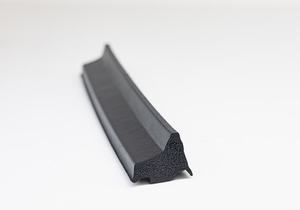
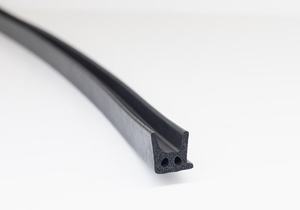
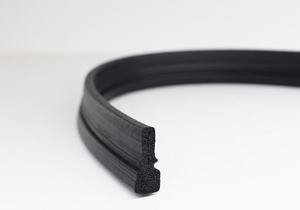
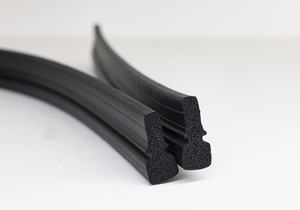
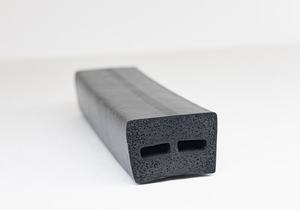
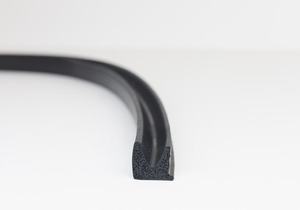
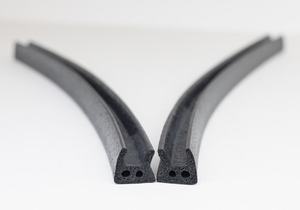
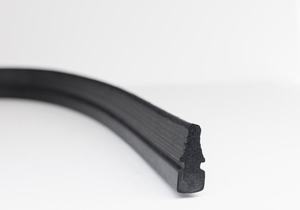
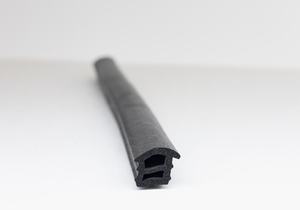
Industrial seals are essential components used in a wide range of industrial applications to prevent leakage, contamination, and ingress of foreign substances in machinery, equipment, and systems. These seals play a critical role in maintaining operational efficiency, reliability, and safety in industries such as manufacturing, automotive, aerospace, oil and gas, chemical processing, and more. Industrial seals come in various types, materials, and configurations to suit different operating conditions, temperatures, pressures, and environmental factors. Here’s an extensive overview of industrial seals:
- Types of Industrial Seals:
- O-Rings: O-rings are circular elastomeric seals with a round cross-section that fits into grooves or cavities to create a seal between two mating surfaces. They are commonly used in hydraulic systems, pneumatic systems, pumps, valves, and fluid power applications to prevent fluid leakage and maintain pressure.
- Gaskets: Gaskets are flat or shaped seals made from materials such as rubber, cork, or metal, used to create a seal between two stationary components or surfaces. They are commonly used in flanged connections, pipe joints, heat exchangers, and engine assemblies to prevent leakage of fluids, gases, and chemicals.
- Mechanical Seals: Mechanical seals are dynamic seals used to prevent leakage between rotating shafts and stationary housing components in pumps, compressors, mixers, and other rotating equipment. They consist of two mating surfaces in sliding contact, often made from materials such as carbon, ceramic, and elastomers, enclosed within a seal housing.
- Lip Seals: Lip seals, also known as oil seals or shaft seals, are used to prevent lubricant leakage and contamination in rotating shaft applications. They feature a flexible lip that seals against the shaft surface while retaining lubricant within the housing. Lip seals are commonly used in automotive engines, gearboxes, and industrial machinery.
- Hydraulic Seals: Hydraulic seals are used in hydraulic systems to prevent leakage of hydraulic fluid and maintain pressure in cylinders, pistons, and valves. They are available in various types, including piston seals, rod seals, wiper seals, and guide rings, designed to withstand high pressures, temperatures, and dynamic movements.
- Pneumatic Seals: Pneumatic seals are used in pneumatic systems to prevent leakage of compressed air and maintain pressure in cylinders, valves, and actuators. They are similar to hydraulic seals but are designed for lower pressures and speeds, often made from materials such as polyurethane, nitrile rubber, or PTFE (polytetrafluoroethylene).
- Rotary Seals: Rotary seals, also known as radial shaft seals or oil seals, are used to prevent leakage between rotating and stationary components in rotary applications. They are commonly used in motors, gearboxes, pumps, and automotive transmissions to retain lubricants and prevent contamination.
- Static Seals: Static seals are used to create a seal between two stationary components or surfaces, such as flanges, covers, and access panels. They are often made from materials such as rubber, silicone, cork, or metal, and are used in various industrial applications to prevent leakage of fluids, gases, and contaminants.
- Material Selection:
- Rubber: Rubber seals, including elastomers such as nitrile, EPDM, silicone, and fluorocarbon (Viton), are commonly used for their flexibility, resilience, and chemical resistance. They are suitable for a wide range of temperatures, pressures, and fluids.
- Metal: Metal seals, including copper, aluminum, and stainless steel, are used in high-temperature, high-pressure, and corrosive environments where rubber seals may not be suitable. Metal seals provide excellent durability, stability, and resistance to deformation.
- Plastics: Plastic seals, including PTFE (polytetrafluoroethylene), nylon, and polyethylene, are used in applications requiring low friction, chemical resistance, and non-reactivity. Plastic seals are lightweight, cost-effective, and suitable for food-grade and pharmaceutical applications.
- Composite Materials: Composite seals, including elastomer-coated metal seals and fabric-reinforced elastomer seals, offer a combination of properties such as flexibility, strength, and durability. They are used in applications requiring specialized performance characteristics.
- Operating Conditions:
- Temperature: Industrial seals must be selected based on the temperature range of the application, including both operating temperature and temperature fluctuations. Specialized seals may be required for extreme temperatures, such as high-temperature seals for engine compartments or cryogenic seals for low-temperature applications.
- Pressure: Industrial seals must be capable of withstanding the pressure range of the application, including both static and dynamic pressures. High-pressure seals may require reinforced construction and specialized materials to prevent extrusion, blowout, or leakage.
- Speed: Industrial seals must be compatible with the speed of the application, including both rotational speed and linear speed. High-speed seals may require low-friction materials and advanced sealing geometries to minimize wear and heat generation.
- Media Compatibility: Industrial seals must be compatible with the fluid or gas being sealed, including considerations for chemical compatibility, fluid contamination, and degradation. Specialized seals may be required for aggressive chemicals, abrasive media, or food-grade applications.
- Seal Design:
- Geometry: Industrial seals are available in various geometries, including round, square, rectangular, and custom shapes, to fit different sealing surfaces and configurations. The seal geometry must be compatible with the mating components and provide a secure and effective seal.
- Profile: Industrial seals may have different profile designs, including flat, U-shaped, V-shaped, and lip-shaped profiles, to provide optimal sealing performance in different applications. The seal profile must be selected based on factors such as pressure, temperature, and fluid compatibility.
- Size: Industrial seals are available in a wide range of sizes, from miniature seals for precision instruments to large seals for industrial machinery and equipment. The seal size must be selected to fit the dimensions of the sealing surface and provide sufficient sealing contact area.
- Installation and Maintenance:
- Proper installation of industrial seals is essential to ensure their performance and longevity. Seals should be installed according to manufacturer specifications, including proper alignment, lubrication, and preload.
- Regular inspection and maintenance of industrial seals are essential to identify signs of wear, damage, or deterioration and prevent unexpected failure. Seals should be inspected for leaks, cracks, tears, swelling, or deformation, and replaced as needed.
- Lubrication of seals may be required to reduce friction, wear, and heat generation, especially in high-speed or high-pressure applications. Compatible lubricants should be used according to manufacturer recommendations.
In summary, industrial gaskets are essential components used to prevent leakage, contamination, and ingress of foreign substances in machinery, equipment, and systems across various industrial applications. With their diverse types, materials, configurations, and operating characteristics, industrial seals ensure reliable performance, efficiency, and safety in industrial processes and operations. Proper selection, installation, and maintenance of industrial seals are critical to maximizing their effectiveness and longevity in demanding industrial environments.
